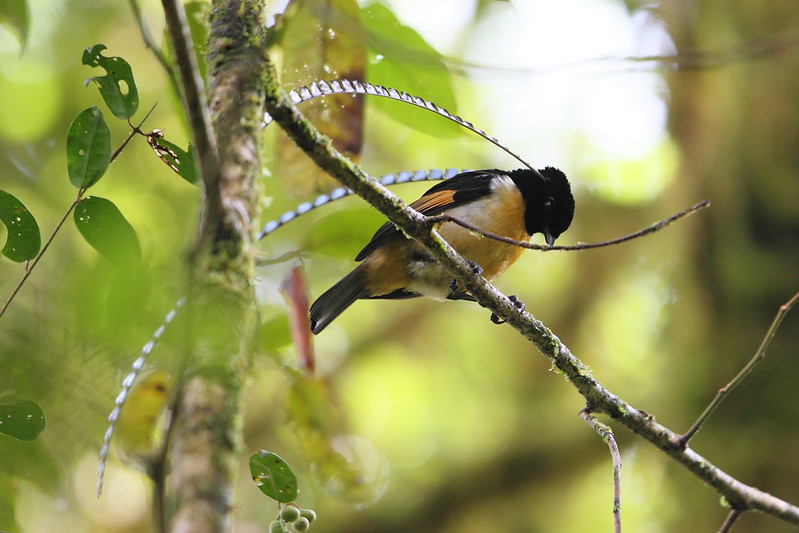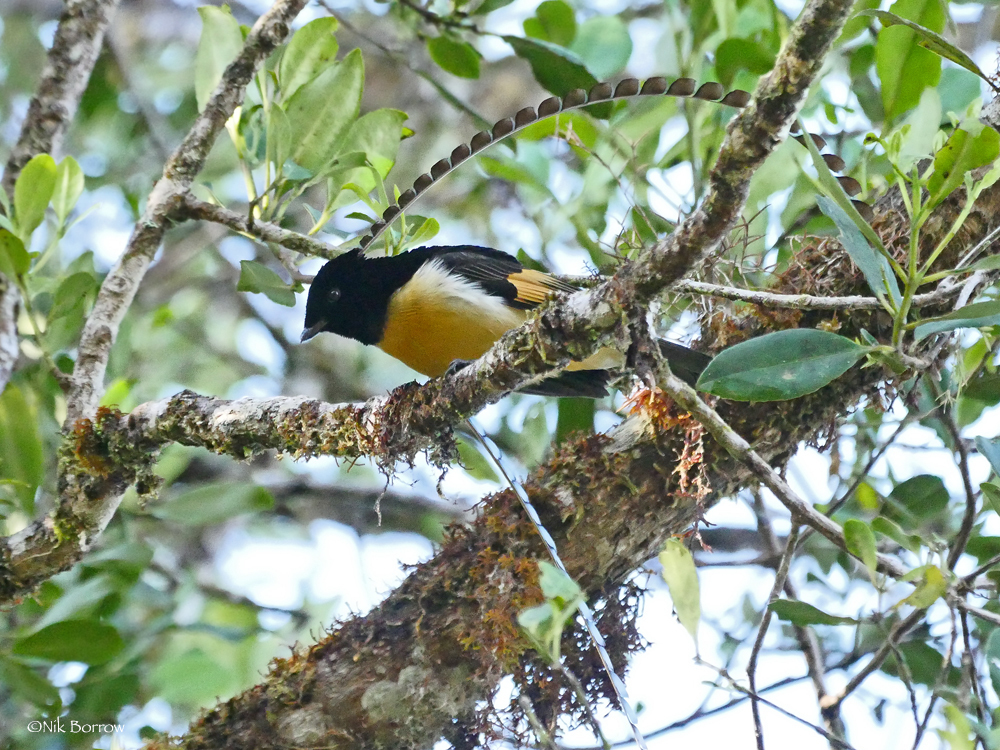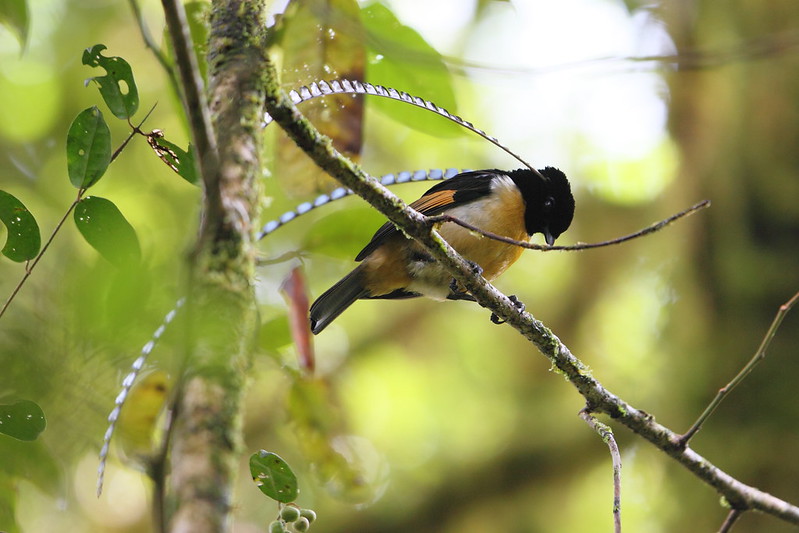The King of Saxony bird-of-paradise is a remarkable bird belonging to the Paradisaeidae family, renowned for its unique appearance and spectacular courtship display. This fascinating bird is found exclusively in the mountainous forests of New Guinea.

Physical Characteristics:
King of Saxony birds exhibit extreme sexuаl dimorphism.
Medium-sized, averaging 22 cm in length and weighing 80-95g.
Jet black plumage covers the head, chest, and upper body, accentuated by shimmering emerald scales on the chest.
Yellow-brown belly.
Large, orange-yellow patches on the wings formed by the base and leading edge of the primary feathers.
Grey-brown legs.
Black bill with a vibrant turquoise tip.
The most striking feature are two long plumes (around 50 cm) extending from behind each eye, adorned with 40-50 flag-like structures.


Female:
Smaller than the male.
Grey-brown plumage on the upper body and pale white with darker bars on the underparts.


Behavior and Habits:
King of Saxony birds are solitary or live in pairs.
Their diet consists mainly of fruits, insects, and small animals.
The male is famous for its elaborate courtship performance, using its two long plumes to attract females. He will dance, sway, and create unusual sounds to capture their attention.
The breeding season occurs between May and October. The female builds a cup-shaped nest on a tree branch and incubates the eggs on her own.


Conservation Status:
The King of Saxony bird-of-paradise is classified as Least Concern (LC) by the IUCN Red List.
However, their habitat faces threats from deforestation and logging.
Conservation efforts are underway to protect this unique bird and its critical habitat.

Interesting Fact:
The bird’s scientific nаme, “Pteridophora alberti,” honors King Albert I of Saxony.
The King of Saxony bird-of-paradise stands as one of the world’s most beautiful birds and holds significant cultural importance for the people of New Guinea.